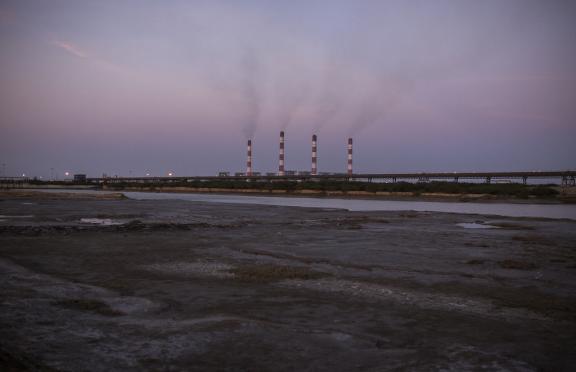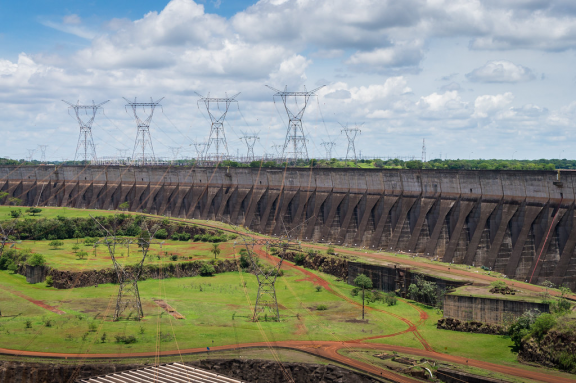The need for private sector accountability mechanisms and beyond: "A canary in the coal mine"
It has been nearly a decade since the United Nations Human Rights Council unanimously approved the framework on business and human rights. These would later come to be known as the Ruggie Principles, aptly named after UN Special Representative John Ruggie.
The framework essentially laid out a set of house rules for the nexus between human rights and business conduct. The principles aimed to address corporate-related human rights harms and provide a more consolidated and effective set of guidelines to business activities, particularly those that transcend national boundaries. Frameworks such as the Ruggie principles exist to provide international stakeholders a roadmap to prevent, or at least reduce, the adverse impacts projects and corporate activities may have on communities. Indeed, the World Bank’s adage of “do no harm” denotes this very notion. The inconvenient truth is that international financial institutions (IFIs) and multi-lateral development banks (MDBs) continue to do unintended harm as a result of impacts from projects and programmes. Is this an unfortunate inevitability? Perhaps. Indeed, it is difficult to say whether MDB infrastructure projects, such as hydroelectric dams for example, are a requiem for “good and sustainable development.” This debate is ongoing and for another time.
The reality is that globalization and the current world order have defined a certain model for development which necessitates the ramping up of economic activity, liberalization of markets and construction of infrastructure among others. As a result, the aspirations and economic opportunities of millions of people rest upon the successful implementation and ensuing employment created by these development endeavors. Ironically however (or perhaps expectedly depending on who you ask), many projects and corporate activities have left communities poorer, more vulnerable, and stripped of their identities, traditions, cultures and land.

Coal-fired power plants can cause huge environmental and social impacts on surrounding areas.
Nowadays, most IFIs have in place some form of an accountability mechanism which vary in mandate, title, and function. All serve a similar purpose of providing access and remedy to project affected peoples by opening doors to an otherwise inaccessible (and far removed) entity. The last three decades have proven to be watershed years for institutional accountability with the creation of the World Bank’s Inspection Panel, the International Finance Corporation’s Compliance Advisory Ombudsperson (CAO) and the Green Climate Fund’s Independent Redress Mechanism, amongst many others. The existence of such accountability mechanisms however, do not always result in compliance or remedy. Take for example the landmark case of a small group of Indian fishermen who took on the International Finance Corporation (IFC) (you can read more about the case and what it meant for accountability here), where it became apparent that accountability mechanisms are still somewhat limited in their power and continue to play more or less an advisory role, without the ability to mandate that action be taken.
In recent years, the international development arena has begun to see an increasing number of new stakeholders and actors. Investment banks, regional bodies and even corporations have gradually become more involved in the implementation and design of various development processes, projects and programmes. IFIs have also begun to increasingly rely on financial intermediaries or in the case of the Green Climate Fund, accredited entities, to implement projects and programmes. These intermediaries have gradually been granted the responsibility of establishing institutional and project level grievance redress mechanisms, to provide affected persons and communities more direct, timely and just redress options. In some circumstances, for example with regard to the GCF, the establishment of such grievance redress mechanisms are required in order to fulfill the conditions of accreditation.

Hydropower dams can bring much needed energy to developing areas but also carry with them signficant social and environmental risks.
The rise of these so-called “second wave” grievance mechanisms are a welcome sign of progress in the direction of institutional accountability and citizen participation in the development process. Nevertheless, these up and coming grievance mechanisms require capacity building, training and expert consultancy in order to prove effective when complaints begin to flow in. How could this be facilitated? The impetus is on the first generation of grievance mechanisms such as the IRM, the Social and Environmental Compliance Unit (SECU) (of the United Nations Development Programme) and CAO among others, to take a leading role in the development of these second wave mechanisms and to establish partnerships, networks and a community of practice and shared learning. If the second wave of grievance mechanisms are expected to provide effective and meaningful redress to project affected people then the first wave should play a critical role in building capacity and facilitating knowledge sharing.
What is next for institutional accountability?
Experts, policymakers and academics have agreed that public investment, official development assistance, and state led development initiatives are no longer the sole panacea for sluggish development. The corporate and private sector is already playing a critical role in international development projects. We are seeing this reflected in foreign direct investment (FDI) net outflows. From 1985 to 2017 there has been an explosion of FDI of approximately 3500%, according to World Bank data. This translates into far reaching and ambitious projects and programmes ramping up in developing countries. In other words, the space and opportunities for private investment in the developing world is expanding. IFIs and even the GCF viz the Private Sector Facility (PSF) have dedicated units with the sole objective of building and engaging with the private sector. Alarmingly however, many corporations and privately funded projects lack or have, what can only be described as, token grievance mechanisms. With that said, there still exists a significant absence of accountability mechanisms within private ventures, despite international frameworks such as the Ruggie principles, triggering their requirement.
To contextualize the very real, and indeed urgent need for effective grievance redress at the corporate level, you need not look further than to the recent case involving mining giant Rio Tinto and a group of traditional Mongolian herdsmen. The Guardian published an expose on the landmark case which you can read about in more detail here. The Guardian highlighted that in the preliminary design and approval of the enormous mining project, Rio Tinto had overlooked significant social risks involved. It took the group of herdsmen 4 years to finally reach a tri-partite agreement between Rio Tinto, the Mongolian government and themselves. The entire proceeding ended up costing Rio Tinto hundreds of thousands of dollars in litigation fees. Moreover, the press coverage of the lawsuit damaged their international reputation, which undoubtedly had knock-on effects on investment and profits. Local communities felt that Rio Tinto had failed them. Now that an agreement has been reached, many herders are awaiting compensation and remedies.
Multi-national enterprises (MNEs) often underestimate and overlook the social impacts and risks of projects. The lessons from these unfortunate events speak to the very raison dêtre of accountability mechanisms. Rather than reacting and litigating, as did the IFC and Rio Tinto, grievance mechanisms (when effective) eliminate the need for such proceedings. They provide local communities and people an opportunity to play a more involved role in internationally funded and private-sector projects which should benefit them, not harm. The establishment of such mechanisms can only be beneficial to corporations and private investments that hope to maintain their public image and carry a successful and sustainable business model into the future.
Article prepared by Peter Boldt